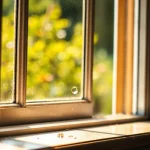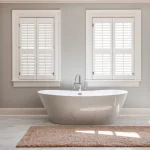Understanding the UK Climate Effects on Wooden Furniture
The UK climate is distinctively variable, often characterized by rain, humidity, and temperature fluctuations. These weather conditions can significantly affect the durability of wooden furniture, especially those kept outdoors. With frequent exposure to moisture and temperature changes, wood can expand and contract, leading to potential warping, cracking, or decay over time.
One common challenge for outdoor wooden furniture in the UK is water absorption due to continuous exposure to rain. When wood absorbs excess moisture, it becomes susceptible to rotting and mold growth. This degradation not only diminishes the aesthetic appeal but also weakens the structural integrity of the furniture. Moreover, prolonged moisture exposure can lead to rusting of any metal components within the furniture.
In the same genre : Expert bathroom fitters in orpington for your perfect remodel
Adapting maintenance approaches to suit local climatic conditions is crucial to prolonging the life of wooden furniture. Regular treatment and protective measures are necessary to mitigate these weather impacts. Consider applying sealants or finishes that offer moisture and UV protection, which are specifically formulated to withstand the erratic UK climate. Furthermore, it’s essential to consistently inspect your furniture for any early signs of damage, allowing for timely repairs and maintenance interventions. Such proactive care ensures that your wooden furniture remains in excellent condition through various seasons.
Selecting the Right Type of Wood for Outdoor Use
Choosing the right type of wood for outdoor furniture is crucial in ensuring longevity and reducing maintenance efforts. Different species offer distinct advantages, especially when considered against the UK climate.
Additional reading : Silicone render: durable, breathable exterior coating options
Teak is a favourite for outdoor applications due to its high oil content, which makes it naturally resistant to moisture and pests. This durable wood requires minimal maintenance and retains its strength over time. Cedar offers another excellent option, known for its natural insect-repelling properties and ability to withstand wet conditions, reducing the chances of decay.
Oak is also a popular choice, valued for its sturdiness, though it may require regular sealing to enhance its resilience against the UK’s fluctuating weather conditions. When selecting outdoor wood types, consider the specific environmental stresses they will face, including moisture levels and exposure to sunlight, to determine the best fit for your needs. Always opt for woods that offer inherent durability to minimize weather impact and ensure your outdoor furniture remains a charming addition to your space.
Wood Treatment Techniques for Longevity
Caring for your outdoor wooden furniture goes beyond simple cleaning; it requires effective wood treatment techniques to ensure longevity. The right treatments, such as wood oils, stains, and sealants, protect wood against the harsh effects of the environment. Let’s delve into the differences and applications of these treatments.
Essential Treatments: Oils, Stains, and Sealants
Wood oils like teak or tung oil penetrate deeply, enhancing the wood’s natural grain while providing moisture resistance. These oils are ideal for maintaining the aesthetic of wooden furniture outdoors, especially in a fluctuating UK climate. Unlike oils, stains add color while preserving wood from UV damage, perfect for keeping furniture looking vibrant. They also offer some water repellency. Lastly, sealants provide a protective layer against both moisture and UV radiation, making them an all-encompassing solution for durability.
How to Apply Treatments Effectively
- Surface Preparation: Begin by cleaning the wood surface thoroughly. Sand lightly to remove old finishes and ensure the new treatment adheres properly.
- Application: Use a clean cloth for oils, a brush for stains, and a spray or brush for sealants. Ensure even coverage and allow the product to absorb fully before applying additional coats if needed.
- Drying Time: Let the treatment dry according to manufacturer instructions, usually ranging from a few hours to overnight, before exposing the furniture to the elements.
By understanding and implementing these treatment techniques, your outdoor wooden furniture can withstand the weather impact of the UK climate, extending its life and beauty.
Protective Finishes to Enhance Durability
Wooden outdoor furniture in the UK climate requires robust protection to withstand weather impacts. Protective finishes play a crucial role in preserving the beauty and integrity of such furniture. These finishes provide an essential barrier against moisture, UV rays, and temperature fluctuations.
Types of Finishes Suitable for the UK Weather
When selecting finishes, consider those that offer comprehensive protection. Varnishes are popular due to their glossy finish and durable shield against moisture and sun exposure. Lacquers provide a hard coat that enhances weather resistance, ideal for high-use areas. For a natural look, opt for oil-based finishes, which penetrate deeply and mirror the wood’s inherent beauty while offering moisture resistance.
Application Techniques for Optimal Protection
Proper application of finishes ensures their effectiveness. Begin by preparing the wood: clean, sand, and ensure it is dry for the best adhesion. Apply the finish evenly with a brush or sprayer, depending on the product, and allow it to dry thoroughly between coats. Multiple coats may be necessary for maximum durability. These practices safeguard your outdoor wooden furniture and help maintain its charm through the UK’s varied seasons.
Effective Cleaning Methods for Outdoor Furniture
Maintaining the beauty and durability of outdoor wooden furniture requires more than just occasional dusting. Understanding outdoor furniture cleaning techniques is critical to preserving your pieces against the UK’s climate challenges. Proper cleaning protects the wood from moisture damage and extends its lifespan.
Recommended Cleaning Methods to Prevent Damage
Regular cleaning is essential to prevent build-up of dirt and grime, which can absorb moisture and lead to surface deterioration. Opt for mild soapy water for general cleaning, gently wiping with a soft cloth to avoid scratching the wood surface. For stubborn stains, a mixture of vinegar and water can be effective without causing damage.
Natural vs. Commercial Cleaning Products: Pros and Cons
- Natural Products: Safe and eco-friendly, natural solutions like vinegar or baking soda are excellent for regular maintenance. They have minimal impact on the environment and are generally safe on most wooden surfaces.
- Commercial Products: While tailored to address specific cleaning challenges, these often contain harsher chemicals that may need cautious use to prevent adverse effects on wood finishes.
Frequency of Cleaning and Maintenance Schedule for Best Results
For optimal furniture maintenance, aim to clean outdoor wood at least once a month during peak usage seasons, such as spring and summer. During autumn and winter, less frequent cleaning is needed, but a quick check to clear debris will help prepare for the next season. A consistent schedule will maintain the wood’s appearance and resilience, ensuring it remains an attractive feature in your garden or patio setting.
Seasonal Care for Wood Furniture
Understanding seasonal maintenance is key to enhancing your wooden furniture’s longevity. Each season demands specific care techniques to protect your outdoor set against the varying climate conditions.
Specific Care Tips for Different Seasons
In spring, focus on a thorough cleaning to remove winter residue. Use mild soapy water and a soft brush to clean surfaces gently. Summer requires regular maintenance due to increased sun exposure – applying protective finishes can prevent UV damage. During autumn, inspect for signs of wear as falling leaves and moisture can promote decay. Winterizing involves preparing furniture for cold weather, such as storing it or covering it securely.
Preparing Wooden Furniture for Winter Storage
Proper storage during the winter is crucial. Start by thoroughly cleaning and drying your furniture. Applying a fresh coat of sealant can enhance water resistance. For brief exposure, use weatherproof covers that allow air circulation to avoid mold. Indoor storage in a cool, dry place is ideal for maximum protection against harsh weather conditions.
Seasonal Inspections: What to Look for and How to Address Issues
Conduct regular inspections to identify any weather impact on your furniture. Check for cracks, signs of rot, and loose joints. Address minor issues with compatible wood fillers or sealants before they escalate. Repairing early prolongs longevity and maintains the structural integrity of your furniture throughout the year.
Storage Solutions to Prolong Furniture Lifespan
Proper outdoor furniture storage is critical to extending the life of wooden pieces, especially in the face of the UK’s notorious weather. Protective covers and strategic storage practices can significantly reduce weather-related wear and tear, thereby enhancing furniture durability.
Best Practices for Storing Outdoor Wooden Furniture
To maintain furniture in prime condition, it’s essential to store pieces correctly when they are not in use, particularly during harsh weather months. Ideally, they should be kept in a sheltered, dry area, such as a shed or garage. If indoor storage is not feasible, weather-resistant covers should be employed. These covers must be breathable yet moisture-repellent to prevent mold and mildew build-up. Regular checks to ensure covers fit securely and are free from holes or tears can prevent water ingress.
Types of Protective Covers and Their Effectiveness
Different protective covers cater to varying needs, from heavy-duty tarpaulins to lightweight breathable fabrics. The heavy-duty options, while more robust, might restrict airflow, increasing the risk of condensation. In contrast, breathable materials strike a balance by shielding against elements while allowing air circulation, minimizing moisture accumulation.
When to Store Furniture and How Proper Storage Impacts Longevity
Furniture should be stored during fall and winter when exposure to cold, wet conditions is highest. Moving furniture indoors during these periods halts potential damage from frost and persistent moisture. By reducing exposure to harsh elements and using protective measures, you can significantly extend the lifespan and maintain the aesthetic appeal of your outdoor wooden furniture.
Product Recommendations for Maintenance Supplies
Maintaining the charm and durability of your outdoor wooden furniture in the UK climate calls for the right furniture maintenance products. Selecting supplies that cater to the specific weather challenges faced in the UK, like high moisture and fluctuating temperatures, is crucial.
Overview of Effective Maintenance Products
For effective upkeep, consider products such as durable sealants, wood oils, and protective finishes designed for extensive UV and water defense. These products not only guard against moisture-induced damage but also enhance the longevity of your wood by preserving its natural integrity.
Essential Tools for Maintenance
Equipping yourself with the necessary tools such as brushes for applying finishes, cloths for oil treatments, and sandpaper for smoothing surfaces is imperative. These tools ensure thorough and even application of maintenance products, aiding in the straightforward upkeep of your furniture.
Finding Quality Supplies in the UK
Quality furniture maintenance products can be sourced from local home improvement stores or reputable online retailers specializing in garden and outdoor furniture care. It’s advisable to choose supplies known for their effectiveness in combating the UK climate‘s specific challenges, ensuring your maintenance efforts yield long-term results.










